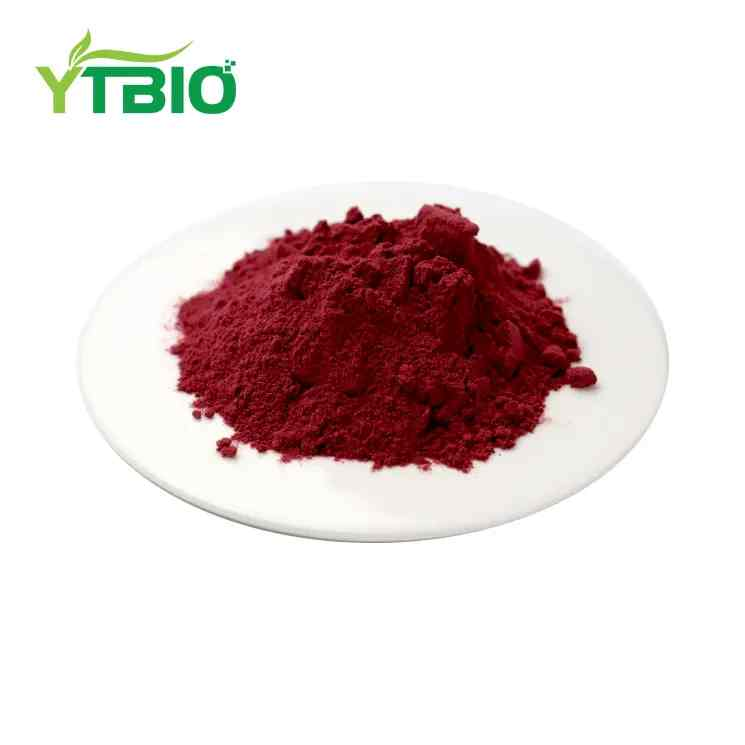Bilberry Anthocyanins
Source:Bilberry Fruit
Active Ingredients:Anthocyanins
Assay:Anthocyanidins:25%
Testing Method:HPLC
Appearance:Dark Violet Fine Powder
Storage conditions: This product should be sealed and shaded, stored in a dry
Certifications:cGMP,ISO22000,ISO9001,EU&NOP Organic Certificate,Kosher,BRC,Halal,HACCP
Shipping speed:3-4 days
- Fast Delievery
- Quality Assurance
- 24/7 Customer Service
Product Introduction
Are You Familiar With Bilberry Anthocyanins?
Ripe bilberry berries are rich in flavonoid pigments and anthocyanins, which act as antioxidants.
Bilberry anthocyanins, the primary component of bilberry extract, may help maintain capillary integrity and stabilize collagen. Anthocyanins are powerful antioxidants. Bilberry anthocyanins have been shown to have stronger eye-protecting effects than regular blueberry supplements.
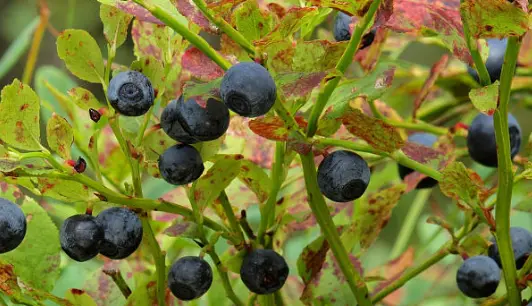
Bilberry extract, a natural ingredient extracted from bilberry fruits, offers numerous health benefits.
Bilberry extract is rich in anthocyanins, particularly cyanidins and delphinidin. Its anthocyanin content can exceed 36%, and its antioxidant capacity far exceeds that of ordinary blueberries. It can improve retinal microcirculation, relieve eye fatigue and dryness, and enhance dark adaptation, helping to prevent eye problems such as myopia and macular degeneration. It also benefits the cardiovascular health of diabetic patients by strengthening vascular elasticity, lowering blood lipids, and reducing the risk of atherosclerosis. It also scavenges free radicals and inhibits inflammation, helping to prevent chronic diseases.
YTBIO:Professional Supplier Of Bilberry Anthocyanins
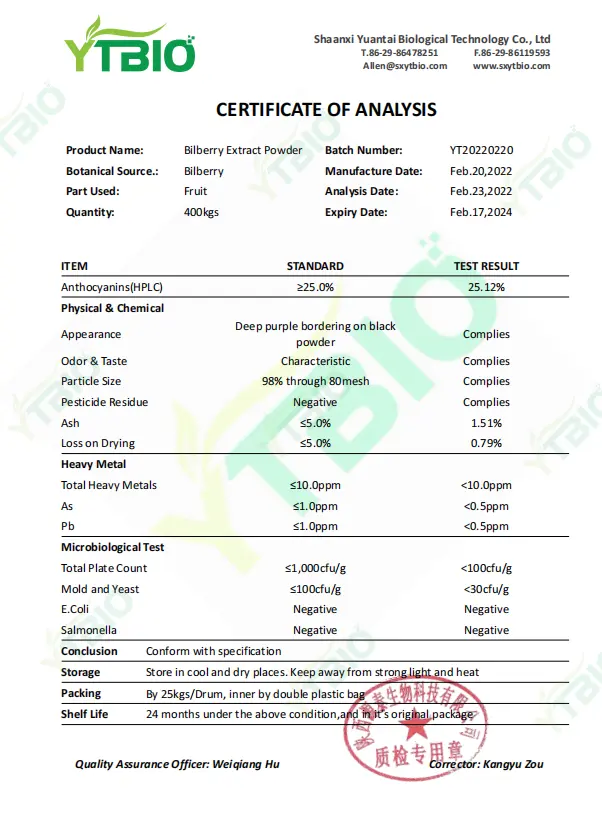
Vision-Protecting Effects of Bilberry Anthocyanins
Bilberry anthocyanins can effectively alleviate or eliminate symptoms of visual fatigue, such as blurred vision, eye swelling, eye pain, photophobia, dry eyes, and eye soreness. Furthermore, anthocyanins can effectively improve distance vision in those at high risk for myopia, in the early stages of myopia, and in mild myopia. These studies demonstrate that anthocyanins play an important role in protecting vision in adults, children, and adolescents.
Bilberry contains a high content of anthocyanins, and long-term consumption has been clinically proven to have positive effects on vision protection, preventing blindness, glaucoma, cataracts, retinal hemorrhage, improving myopia, enhancing light sensitivity, improving night vision, and addressing macular degeneration, diabetic retinopathy, retinitis pigmentosa, retinal circulatory diseases caused by diabetes and hypertension, and night blindness.
Anthocyanins are being used clinically in patients with refractive errors and associated ocular and systemic symptoms to investigate their effects on improving vision and visual fatigue. Patients were given 200 mg of anthocyanins daily orally for one month. Changes in ocular symptoms, visual acuity, and refractive power were observed. Blurred vision improved in 77.2%, eye swelling in 84.9%, eye pain in 93.1%, photophobia in 50.6%, dry eyes in 87.3%, and eye soreness in 81.9% (P<0.05).
1. Antioxidant Effects of Anthocyanins
Bilberry anthocyanins are important for maintaining eye health and preventing vision loss. Their antioxidant capacity is 20 times that of vitamin C and 50 times that of vitamin E. They effectively scavenge free radicals, prevent arteriosclerosis, and protect the microvasculature of the eye.
2. Improve Vision and Prevent Eye Diseases
Long-term consumption of bilberry, rich in anthocyanins, has positive effects on protecting vision, preventing blindness, glaucoma, cataracts, retinal hemorrhage, improving myopia, enhancing light sensitivity, improving night vision, and treating macular degeneration, diabetic retinopathy, and retinitis pigmentosa.
3. Relieve Eye Fatigue
A randomized controlled clinical trial in Japan showed that daily intake of 160 mg of bilberry extract effectively alleviated eye fatigue caused by prolonged use of video display devices (such as computers and mobile phones).
Main Applications Of Bilberry Anthocyanins
Health Products
Bilberry products containing anthocyanins are widely used in health supplements.
Food Industry
Functional Beverages: Anthocyanin extracts are used in the production of functional beverages, and their antioxidant properties make them a popular additive.
Natural Pigments: As natural antioxidants, anthocyanins are highly safe and widely used in food coloring.
Medical Applications
Antioxidant: Used to scavenge free radicals, reduce cellular damage caused by oxidative stress, and prevent chronic diseases.
Cardiovascular Protection: Inhibits cholesterol absorption and promotes metabolism, lowering low-density lipoprotein (LDL) while increasing high-density lipoprotein (HDL) levels, maintaining cardiovascular health.
Anti-Inflammatory: Inhibits the production of inflammatory mediators and reduces tissue damage.
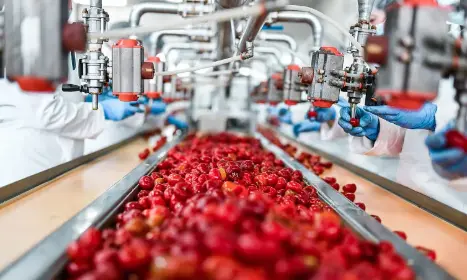
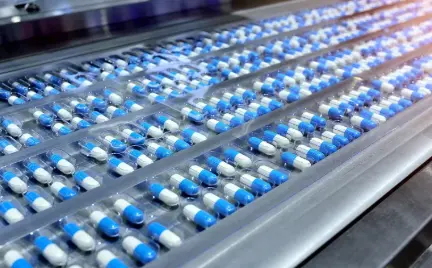
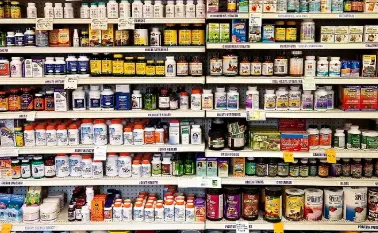
Clinical Applications
Eye Health: Promotes retinal cell survival, improves vision, and prevents diseases such as glaucoma and cataracts.
Immunity Enhancement: Enhances capillary flexibility and reduces the risk of blood vessel rupture.
Anti-Aging: Scavenges free radicals and slows cell aging.
The Difference Between Roselle Anthocyanins And Bilberry Anthocyanins
The Effects of Anthocyanins
Anthocyanins also have important physiological effects in the human body. Research has shown that anthocyanins have a variety of effects, including anti-inflammatory, anti-tumor, antioxidant, and lipid-lowering. Anthocyanidin glycosides, in particular, possess strong antioxidant properties.
Anthocyanidins can be divided into different types based on their color and chemical structure, such as glycoside anthocyanidins and non-glycoside anthocyanidins. Scientists have shown that anthocyanidins are potent free radical scavengers, with an antioxidant capacity 20 times that of vitamin C and 50 times that of vitamin E. Their in vivo activity is unmatched by other antioxidants.
Ingredients
Bilberry (Vaccinium vitis-idaea L.) is a dwarf shrub of the genus Vaccinium in the Ericaceae family. It prefers warm, cool climates and is cold-tolerant, often growing beneath coniferous forests in subarctic zones. The leaves and fruit of bilberry are used as medicine, with a sweet taste and neutral properties. They have anti-inflammatory and diuretic properties, and can be used to treat urethritis, cystitis, and other conditions. Bilberry is bright red and has a sweet and sour flavor. It can be eaten fresh, made into jam, and used in winemaking. Bilberry leaves have antibacterial properties and are used to treat gonorrhea, nephritis, and cystitis. They also have anti-aging and health benefits. The seeds contain oil, which can be made into a drying oil, and the leaves contain tannins, which can be extracted and used as a baking material.
Bilberry anthocyanins primarily include cyanidin-2-glucoside, cyanidin-3-xylosylgoside, cyanidin-3-hemiglycoside, cyanidin-2-rhamnoside, delphinium-3-rhamnoside, delphinium-5-glucoside, 3-O-acyl proanthocyanidin, malvidin-3,5-diglycoside, and 3,3-di-acyl proanthocyanidin.
Roselle (Hibiscus sabdariffa L.) is an annual herbaceous plant in the Malvaceae family. Native to Africa, it thrives in humid, hot climates and tolerates drought and acidic soils. It is known as the "botanical ruby." Its roots, fruits, and seeds are used medicinally to clear heat and relieve summer heat, nourish the skin, eliminate freckles, and alleviate hangovers. It is also effective for cardiovascular diseases, arteriosclerosis, and hypertension.
The anthocyanins in roselle have long attracted the attention of scientists worldwide. Research has shown that they primarily exist in the form of cyanidin and delphinidin anthocyanidin glycosides. The main components are delphinidin-3-sambubioside (Dp3-sam), cyanidin-3-sambubioside (Cy-3-sam), delphinidin-3-glucoside, and cyanidin-3-glucoside.
Composition and Content
Anthocyanins are one of the most important active ingredients in bilberry. Anthocyanins in bilberry are primarily anthocyanins, present primarily in the form of anthocyanins and anthocyanases. Anthocyanins are compounds composed of a glycoside bound to anthocyanidins, while anthocyanases are enzymes that hydrolyze anthocyanins.
The composition and content of anthocyanins in bilberry are affected by various factors, including variety, growing environment, and harvesting time. Different varieties of bilberry may contain different types and amounts of anthocyanins. Furthermore, the climate and soil conditions of the growing environment also influence the synthesis and accumulation of anthocyanins. For example, bilberries grown in areas with ample sunlight and moderate temperatures tend to be richer in anthocyanins. Harvesting time also plays a significant role in influencing anthocyanin content in bilberry, with bilberries harvested at the ripening stage generally containing higher levels of anthocyanins.
Anthocyanins are also a key active ingredient in roselle. Studies have shown that the total anthocyanin content of dried roselle calyx is 1.0% to 1.5%, including four anthocyanins: delphinidin-3-O-sambubioside, cyanidin-3-O-glucoside, delphinidin-3-O-glucoside, and cyanidin-3-O-sambubioside, with the latter two being the primary coloring components. Delphinidin-3-O-sambubioside is the primary component of roselle anthocyanins, accounting for 85% of the total anthocyanins. It significantly inhibits H2O2-induced reactive oxygen species production, GSH depletion, decreased mitochondrial membrane potential (MMP), and mitochondrial membrane peroxidation in HepG2 cells, thereby alleviating H2O2-induced oxidative stress. Delphinidin and cyanidin in roselle calyx exhibit high levels of deacylation and stability.
Roselle extracts are available in both proportional and standardized forms. Standardized extracts are standardized by anthocyanin content, ranging from 1% to 20%. Standardized extracts are primarily used as food colorings, while proportional extracts are used in foods and health supplements.
Uses
Roselle is rich in anthocyanins and can be used to brew teas and beverages. Its sour flavor allows for the extraction of roselle pigments, which can be used as a food additive in the food industry.
Bilberry anthocyanins are important for maintaining eye health and preventing vision loss. They protect the eye's microvasculature, thereby promoting blood circulation. They also accelerate the regeneration of rhodopsin, which is essential for good vision. Rhodopsin is the most fundamental substance in the eye's vision and enhances sensitivity to darkness and low light.
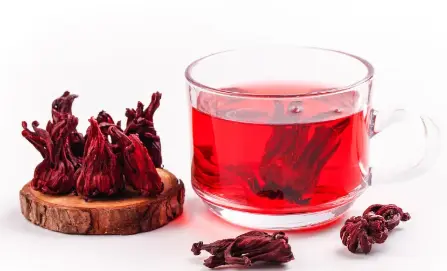
Extraction Process
Main methods for extracting roselle anthocyanins include enzyme extraction, water extraction, ethanol extraction, and microwave-assisted extraction.
Ethanol extraction is currently more feasible in industrial production. While higher concentrations of ethanol can effectively remove water-soluble impurities, thereby increasing pigment yield, this method also requires large amounts of solvent, resulting in high subsequent processing costs and the potential for residual solvent.
The extraction process of bilberry anthocyanins is an important area of research, as different extraction methods can affect the quality and yield of bilberry anthocyanins, thereby impacting their application prospects. Currently, a variety of extraction methods are available, including traditional methods such as solvent extraction, reverse osmosis, and ultrasonic extraction, as well as modern techniques such as microwave-assisted extraction and supercritical fluid extraction.
However, each extraction process has its own unique advantages and disadvantages. Solvent extraction is a common method, but the use of organic solvents can pose environmental and human hazards. Ultrasonic extraction is highly efficient, but requires high equipment costs and high process requirements. Reverse osmosis extraction is less efficient, and microwave-assisted extraction has not yet been widely used.
Therefore, there is a need to optimize the extraction process to achieve higher extraction yields, better quality, and greater economic viability of bilberry anthocyanins.
Optimizing the extraction process is crucial for bilberry anthocyanin extraction. This process is complex, requiring consideration of multiple factors, including extraction time, temperature, solvent, material-to-liquid ratio, and stirring speed. Some studies have shown that using reverse osmosis membranes and water as solvents can achieve higher extraction yields and better anthocyanin quality.
In addition, several auxiliary techniques can be used for bilberry anthocyanin extraction, such as ultrasonication, microwave heating, and supercritical fluid extraction. Supercritical fluid extraction is currently the most advanced technology for bilberry anthocyanin extraction. Its operating conditions can be adjusted by varying pressure and temperature, ensuring efficient extraction while preserving the original properties of the bilberry anthocyanins.
YTBIO has own factory and R&D team, dedicated to providing you with high-quality bilberry anthocyanins and services. If you have any questions or needs, please contact us and we will respond to you as soon as possible.
_1737093401309.png)
